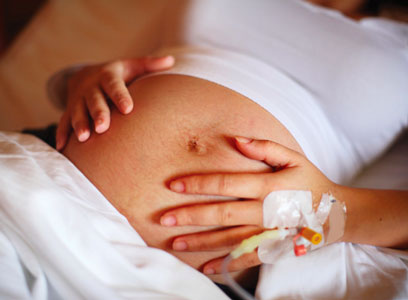Prenatal Infection Prevention Month
It’s February! We know you’re still smiling about Valentine’s Day […]

At this point, you’ve probably taken all of the necessary precautions to make sure no infection gets transmitted to you or your baby. You’ve probably started heating up deli meat, said farewell to sushi and resolved not to lick the spoon when you make brownies. But, there is another crucial step to take to make sure you and your baby are A-OK when the little one arrives: getting tested for group B strep (GBS) in your third trimester.
According to the Centers for Disease Control and Prevention, GBS is bacteria found in 25 percent of all healthy women and poses no real health threats in our non-pregnant lady-friends. However, this is not the case for women who are pregnant and if you are in your third trimester, this can be particularly dangerous for your baby.
According to the Group B Strep Association, GBS can be transmitted from mom to baby when the mother’s water breaks and during delivery when the baby passes through the birth canal. Babies become infected when they swallow or inhale the bacteria.
There are two types of GBS: early-onset and late-onset. Early-onset infection is linked to the development of other diseases such as sepsis, meningitis and pneumonia. If your baby has early-onset, he will develop signs within the first week following delivery. Late-onset is most common in premature babies, and they are at higher risk of getting the disease. Signs of late-onset usually begin one week following birth but can develop much later, even several months after your munchkin arrives!
According to the GBSA, symptoms to look for in your baby include: grunting sounds, stiffness, irritability, fever, difficulty breathing and refusal to feed. For a complete list of symptoms please visit groupbstrep.org. Eighty percent of cases show symptoms in the first week of life.
We know, you have been poked and prodded enough. Trust us, we cringe just thinking about it too. But, if you’re between 35 and 37 weeks it’s time to get tested. Testing is simple and includes a swab of the vagina and rectum. Be sure to ask your doctor about self-testing, as some practitioners now offer this.
If tested positive, your doctor will intravenously administer an antibiotic, usually penicillin, during delivery. Women who receive the antibiotic during delivery only have a one in 4,000 chance of delivering a baby with GBS. However, women who do not receive the antibiotic during labor face a one in 200 chance.
If your water breaks 18 hours before labor begins, your baby is premature, or you have had a baby with GBS before, your baby is at higher risk. For more risk factors visit cdc.gov.
Baby will be here before you know it! Now that you’ve had your Valentine’s Day date, make a date to get tested for group B strep.







